#cinema techniques
Explore tagged Tumblr posts
Text
NICKEL BOYS WAS *CRAZY* GOOD AND WORTH SEEING IN THEATERS SPECIFICALLY HOLY SHIT
#GO SEE IT RIGHT NOW RUN DO NOT WALK#Ik it is a book adaptation but the way it was done--what Stef said about the formal visual art-literature dialectic supercession#Felt like another pendulum swing re: immediacy & perspective--stream of consciousness cinema#You read a lot about how film seeps into literary language both re: describing action at a remove (verbs verbs verbs)#& re: montage techniques but this is like. Cutting away the descriptive action#Keeping some of the montage but as free association--as representative thought-images not as like Time Passing--#and hewing as close as possible to. as I said stream of consciousness
11 notes
·
View notes
Text
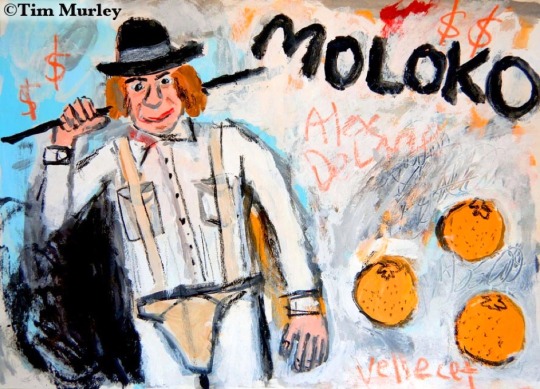
Moloko Plus.➕ (V.2)⏰🍊🥛🕘(mixed media on canvas)🍊🕰🍊
#pop art#dystopian society#dystopian fiction#dystopianfuture#dystopian film#dystopian art#dystopian future#malcolm mcdowell#stanley kubrick#70s#70s movies#scifi#scifiart#sci fi and fantasy#sci fi#sci fi art#droogs#droog#costume design#cinema#ultraviolence#Durango 95#a clockwork orange#clockwork orange#anthony burgess#dystopia#ludovico technique#Moloko#milk#korova milk bar
11 notes
·
View notes
Text

3 notes
·
View notes
Video
youtube
Chin Na techniques takedowns Vid 40 Northern Praying Mantis Kung Fu Sifu... Chin Na techniques takedowns using the power of Northern Praying Mantis Kung Fu Vid 40. In this video you'll see the versatility of the Northern Praying Mantis and how Sifu Bryan uses the Mantis fist and the variations of Chin Na techniques with his wealth of experience and knowledge, be it attack or Défense.
#youtube#kung fu cinema#kungfu#kungfumaster#kungfumartialarts#kungfustyle#chinna#kungfufight#kung fu fighting#kungfustudent#kungfuschool#kungfuclub#kungfuclasses#kungfuclass#kungfutraining#kungfufitness#confidence#fearless#martialarts#martial arts training#martialartsschool#martialartsclub#martialartsteacher#martialartsstudent#martialartsstyle#self defense#self defence techniques#self defence moves#selfdefense#self defense for women
2 notes
·
View notes
Text

How The Alexander Technique Changes The Lives Of Actors - Jean Louis Rodrigue [FULL INTERVIEW]
Watch the video interview on YouTube here.
#filmmaking#movies#cinema#actors#spine#acting#the alexander technique#movement#performer#dance#theatre#theater#film set#working with actors#characters#dramatic arts#film and tv#film and television#performing artist#performing art#filmmakers on tumblr#actors on tumblr#making a movie#set life#directing actors#i tonya#j edgar hoover#margot robbie#leonardo dicaprio#theater life
2 notes
·
View notes
Text
Written By Noam Kroll
One of the cornerstones of independent, micro-budget productions is undeniably single-location filmmaking.
It’s practically a rite of passage for first time feature filmmakers.
Limiting your production scope to one (or possibly two) main locations has long been one of the best ways to save time and money on a DIY production.
This is why it’s often recommended as a model for your first feature film. The benefits are so obvious…
Working within a single location simplifies production in every way. You need less time, can avoid company moves, and can cut down on logistical expenses dramatically.
Not to mention, if you shoot in your own home (or a location you have access to), you have infinite prep time. Giving you more ability to dress the set, rehearse with your actors, and re-write to match the location.
All of this can result in more time spent with the actors, less time dealing with logistical nightmares, and more bandwidth to focus on the craft itself.
But despite the obvious upsides, there are some major challenges and potential pitfalls associated with single location filmmaking.
I explored some of these issues in depth in this podcast, but in short, here is a quick summary:
Issue #1 – Maintaining visual interest
No matter how great your location may be, if you aren’t careful about your stylistic approach the audience will become fatigued.
You can solve much of this at the script level, by first ensuring you are writing the script to maximize every corner of the location.
Shoot in every room, every space, and every nook and cranny that you can. Diversifying your backgrounds / settings can make a massive difference.
It’s also good practice to set your scenes during different points in the day, to create more dynamic lighting opportunities.
A sunrise scene will be lit very differently than a midnight scene, even if they are set in the same room. This minor adjustment on the script level can create major contrast scene to scene.
Once on set, it’s about getting creative with camera placement, framing, and other visual elements
I recently wrote an article about the unique coverage in Poor Things, which is a great point of reference. That film used wildly different lenses in each scene, cutting between fish eye and long lens, and then back again. It keeps your eyes glued to the screen.
Whatever visual style you choose, make it distinct. There’s no reason why two scenes shot in the same room have to be covered the same way.
Issue #2 – The stakes aren’t high enough
Many of the best single location films are primal in nature. They deal with stories that are life or death – or at least feel that way to the characters and audience.
The Ryan Reynolds film Buried is probably the most restricted film I’ve ever seen, at least in terms of location scope. The entire movie takes place in a coffin underground, with the main character buried alive.
The primal nature and natural high stakes of that story are what make it fascinating to watch .
Certain genres tend to lend themselves well to single location filmmaking for this reason. Horror in particular can be an obvious choice (especially the “monster in the house” sub-genre).
That said, you can make an incredible single location / high stakes film in any genre. Drama, comedy, romance, it’s all possible. Some genres just have the primal element more baked in than others.
Issue #3 – Dialogue
Almost every single location film is made or broken by the quality of dialogue.
It goes without saying that you should always challenge yourself to write the most compelling, nuanced, subtextual dialogue that you can. Regardless of the scope of production.
But on a micro-budget single location film, dialogue plays an even more critical role than usual. With so much else stripped away, it is the ultimate focal point for the audience.
Nailing the dialogue isn’t just about what you write on the page, though. It’s equally (perhaps more so) about the actors that you cast.
There is no better gift that you can give your film than amazing performances. But it’s a one two-punch – You need a great script to attract great actors, and you need great actors to elevate your material.
So write scenes that will excite both your actors and your audience. And don’t be afraid to push the performances into uncharted waters.
Ultimately, the audience is watching two (maybe three) actors talking in a room for the majority of your film. That’s what you are up against. There is no better remedy than a great cast armed with a solid script.
All of these elements combined will ensure your single location film feels exciting, and unlike any that has come before.
#filmmaking#filmmaking tips#cinematography#filmmakers#movie#movies#filmmaking techniques#cinematography tips#indie filmmaking#film edit#cinema
3 notes
·
View notes
Text
I'm looking for that one post about one-shot filming(dunno if that's the right term) used in Red, White & Royal Blue(2023). The op mentioned that scene in Alex's room after the Prime Minister's dinner, where the whole scene was shot without any cuts or switching angles/perspectives. One commenter said that it was also used during the whole election scene.
I can't stop thinking about it for some reason. Those scenes are such works of art, and I keep replaying those scenes every rewatch(I've lost count after 15th rewatch, I'm that crazy about this movie). I forgot to reblog it, and now I can't find it on my likes.
Please put me out of my misery and help me find it.
#red white and royal blue#red white and royal blue movie#rwrb film#film photography#cinemetography#cinema#filming#filming techniques
7 notes
·
View notes
Text
Arata Fukoe used 34 GoPros to create this frozen scene using the 3D Gaussian Splatting technique.
It employs mathematical models to reconstruct 3D scenes from 2D footage, gaining rapid popularity in the cinema industry.
📹 : arata_fukoe
—
3D Gaussian Splatting, announced in August 2023, is a method to render a 3D scene in real-time based on a few images taken from multiple viewpoints.
The 3D space is defined as a set of Gaussians, and the parameters of each Gaussian are computed using machine learning.
Note that machine learning training is not required at rendering-time, therefore fast rendering is possible.
#Arata Fukoe#GoPro#3D Gaussian Splatting#3D Gaussian Splatting Technique#frozen scene#3d scene#2D footage#cinema industry#3D space#Gaussians#animation#photorealistic scenes#rendering technique#films#movies
3 notes
·
View notes
Text
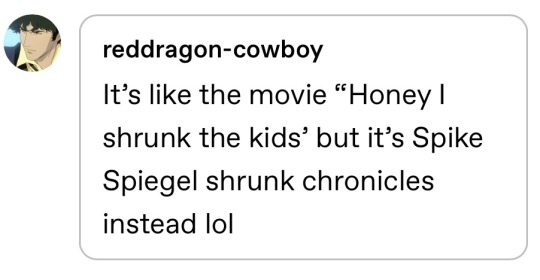
My favorite fact about that movie is that it was written by the same guy who made Re-animator/From Beyond which is why it has horror elements in it. The bee and spider scenes are terrifying!!!! And lawn mower… apparently he wanted to be a little more daring (the idea of children in deadly danger depictions on the big screen was wonky back then) but Disney said no was why he left after they messed w his script. I want to see his vision I want my 90’s camp horror film that involves being very small.
#I’m a big cinema nut I love behind the scenes and how movie magic works especially from that era#Lots of good forced perspective use of miniatures and acting on a projected screen#The projected screen technique is actually how they filmed the tiny ash clones in army of darkness#You can tell very easily too with how some quick scenes have ash in completely different light from the tiny clones#But it’s still so impressive with their budget limits and ofc Sam Raimi’s silly visions 💚#ANYWAYS in regards to Spike — they just gotta find out how to unshrink him and what the device that shrunk him is used for#But that can take a week… maybe more#And the bebop crew is full of CLOWNS#Only Jet is in any way responsible with spike’s height issue and treats it seriously!!!#And maybe Ein but Ein is a dog#I do love doodling tiny spike leaning against Ein or on top of him so cute Ein is so excited#Txt#replies#Reddragoncowboy
2 notes
·
View notes
Text
Thoughts on Cinema: Finding the Middle Ground Between Film and Digital Filmmaking
As someone who has spent a significant amount of time working with audio and video production—and as a long-time moviegoer—I’ve noticed a troubling trend in the film industry: we seem to have fallen into an all-or-nothing mindset when it comes to film versus digital. It’s like there’s this unspoken war between purists who champion celluloid as the only “real” way to make a movie and the…
#AI upscaling#audio compression#Blu-ray mastering#Christopher Nolan#cinema#cinema technology#digital filmmaking#digital signal processing#digital vs analog#Dolby Atmos#film industry critique#film preservation#film versus digital#filmmaking techniques#FLAC#home theater#hybrid workflows#immersive audio#lossless audio#modern cinema#movie reviews#movie theaters#PCM audio#Quentin Tarantino#Roger Deakins#sound design
0 notes
Text
Brando - The Man In The Leather Jacket
New Post has been published on http://esonetwork.com/brando-the-man-in-the-leather-jacket/
Brando - The Man In The Leather Jacket
This week on Tales from Hollywoodland, Arthur, Julian, and Steve explore the mannerisms, machismo, and mythos of the truly iconic actor, Marlon Brando. From yelling “Stella!” so memorably in A Streetcar Named Desire, to his mumblings in the jungle in Apocalypse Now, with a visit along the way to The Wild One, Guys and Dolls, The Young Lions, The Godfather, and so much more, they explore the man who changed acting forever.
Links
Tales From Hollywoodland on Facebook https://www.facebook.com/talesfromhollywoodland
Tales From Hollywoodland on Instagram https://www.instagram.com/talesfromhollywoodland/
Tales From Hollywoodland on YouTube https://www.youtube.com/channel/UCdLX2kbwHqdn47FNN6vVN7Q
We want to hear from you! Feedback is always welcome. Please write to us at [email protected] and why not subscribe and rate the show on Apple Podcast, Spotify, iHeartRadio, Goodpods, PlayerFM, YouTube, Pandora, Amazon Music, Audible, and wherever fine podcasts are found.
#MarlonBrandopodcast #HollywoodlegendMarlonBrando #TalesFromHollywoodlandepisode #MarlonBrandocareerretrospective #Brandosactinglegacy #HollywoodiconMarlonBrando #Brandosimpactoncinema #Methodactingpodcast #Brandofilmographyanalysis #ClassicHollywoodpodcast #HollywoodGoldenAge #MarlonBrandobiography #Hollywoodactorspotlight #Brandosmemorableroles #Hollywoodactingtechniques #Brandosinfluenceonactors #HollywoodstarMarlonBrando #Brandosculturalsignificance #Hollywoodpodcastdiscussion #Brandoscontributiontofilmhistory
#Arthur Friedman#Brando filmography analysis#Brando's acting legacy#Brando's contribution to film history#Brando's cultural significance#Brando's impact on cinema#Brando's influence on actors#Brando's memorable roles#Classic Hollywood podcast#Hollywood acting techniques#Hollywood actor spotlight#Hollywood Golden Age#Hollywood icon Marlon Brando#Hollywood legend Marlon Brando#Hollywood star Marlon Brando#Marlon Brando biography#Marlon Brando career retrospective#Marlon Brando podcast#Steven Jay Rubin#Tales From Hollywoodland
0 notes
Text
Movie Analysis and Review: "One Flew Over the Cuckoo’s Nest" (1975)
Introduction:One Flew Over the Cuckoo’s Nest is a cinematic masterpiece that garnered critical acclaim and multiple Academy Awards upon its release in 1975. It delves into the timeless struggle between individual freedom and societal conformity within the confines of a mental institution. Led by the iconic performances of Jack Nicholson and Louise Fletcher, the film captivates audiences with its…
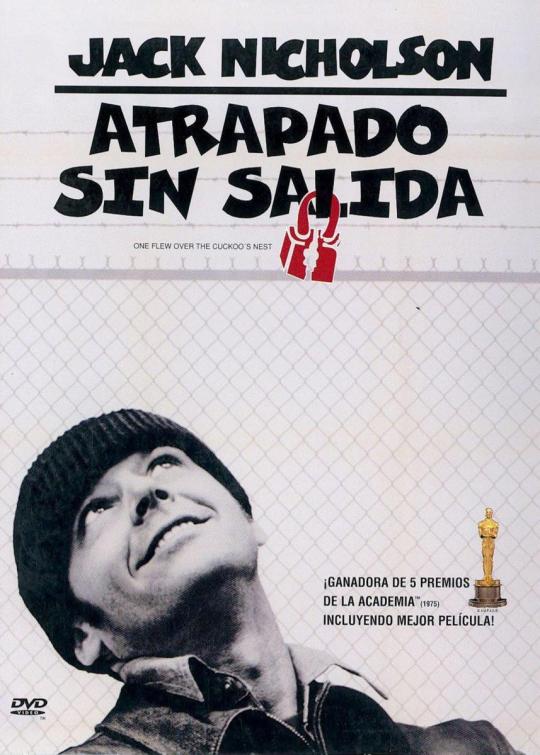
View On WordPress
#1970s Cinema#Academy Awards#Authoritarianism#Character Development#Cinematic Masterpiece#Cinematic Techniques#Classic Film#Conformity#Counterculture Movement#Critique#Cultural Impact#Ensemble Cast#Farid M. H. Sadeqi#Farid Sadeqi#Film Analysis#Freedom#Hosein Tolisso#Human Rights#Individualism#Institutionalization#Jack Nicholson#Louise Fletcher#Mental Health#Mental Institution#Miloš Forman#Mohammad Hosein Sadeqi#Movie Review#Power Dynamics#Psychological Drama#Rebellion
0 notes
Text
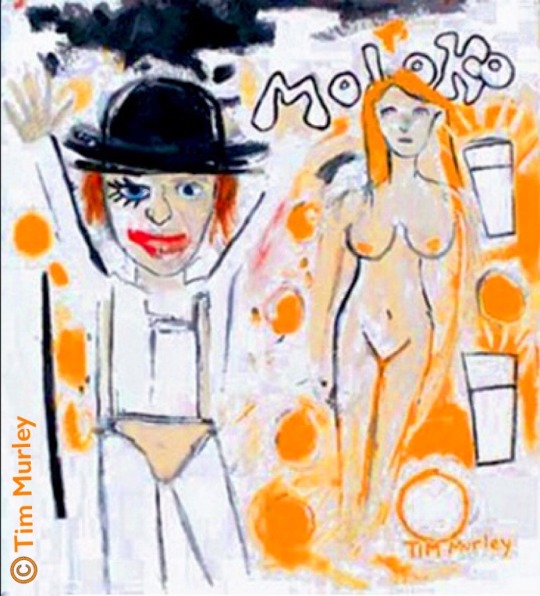
Moloko Plus.➕⏰🍊🥛🕘(mixed media on canvas)🍊🕰🍊
#a clockwork orange#clockwork#clockwork orange#malcom mcdowell#stanley kubrick#moloko#droogs#droog#ludovico technique#70s movies#70s film#70s cinema#filmmaker#film director#costume design#film discussion#ultra violence#violence#anthony burgess#novel#scifiart#sci fi books#sci fi#science fiction#sci fi art#dystopian#dystopia#pop art#basquiat#contemporary art
13 notes
·
View notes
Text
Quentin Tarantino: Revolutionizing Film and Culture

View On WordPress
#inspirational#Cinema#Cinematic Techniques#Creator#Cult Movies#Director&039;s Style#Film Analysis#Film Directing#Film Industry#Hollywood Directors#Movie Characters#Movie Merchandise#Movie Soundtracks#Non-Linear Storytelling#Pop Culture#Quentin Tarantino#Tarantino Films
0 notes
Text
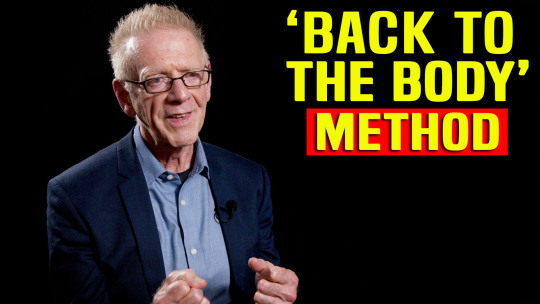
5 Steps To Script Analysis For Actors - Jean-Louis Rodrigue
Watch the video interview on Youtube here.
#writing#writers on tumblr#screenwriting#filmmakers on tumblr#cinema#filmmaking#movies#screenwriters on tumblr#script#film#character concept#character backstory#character background#actors#popee the performer#performance#performing art#j edgar hoover#i tonya#directing#behind the scenes#directors#theater tech#acting#alexander technique#movement#theatre#theater#musical theatre#musical theater
4 notes
·
View notes
